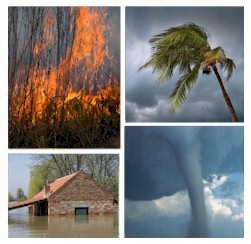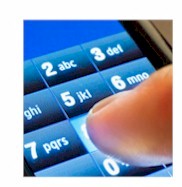|
|


Emergency Response Systems
 This section of our technical library presents articles written about Emergency Alert Systems and Disaster Recovery definitions, terms and related information.
This section of our technical library presents articles written about Emergency Alert Systems and Disaster Recovery definitions, terms and related information.
The 911Broadcast emergency notification and alert service can deliver a large number of phone calls using a network of phone systems employing digital phone lines simultaneously. Should a disaster such as a snow storm, wild fire or flood hit your area, 911Broadcast systems can alert your community quickly providing specific instructions if an evacuation is required.
This service is available using our emergency broadcasting systems. If a dangerous chemical spill occurs in your community, you can target specific areas to call. If a severe snow storm hits your area, your community can be notified of school closings or event cancellations.
Mass-alert technology gets an A+ in schools
BY BEV McCARRON
Star-Ledger Staff, www.nj.com
Lisa Palazzetti and her family were having dinner at a neighbor's home in Harding Township on Sunday when they were startled by the sound of their cell phones and the house telephones ringing all at once.
It was a school alert message from their district alerting both families that the season's first big snow was going to mean a delayed opening the next day.
"We heard a recording that said there was an urgent message from Harding Township school, and please get pen and paper and write down the details," said Palazzetti, who has two children in district schools. "We did know the night before, which was great. We were happy to be able to sleep in a bit."
A new mass notification system being used in Harding and Spring Lake Heights now allows schools to simultaneously reach out to thousands of parents through multiple channels -- at home, the office, by cell, page or e-mail -- or in the case of the recent snow delay, all of the above.
Although the technology was developed after the 9/11 terror attacks to instantly communicate with parents in dire emergencies, it has found wide use in alerting parents to changes in school schedules and as a reminder of routine events like picture day or PTA meetings.
Harding and Spring Lake Heights are using Honeywell Inc.'s instant alert system, which got its first big test last weekend.
Instead of phone trees that were used in Spring Lake Heights and relied on parents to keep the chain going, or the auto-dialer used in Harding that could take hours to reach every family, both school districts sent out emergency messages that reached parents and staff in no time.
"We did the alert at 5:30 Sunday, and by 5:33, 700 people were notified," Spring Lake Heights Superintendent Linda Martensen said of the evening alert.
She said she also received a report detailing the time everyone was called that also let her know eight staff members failed to receive the message. Those staff members were reached later, she said.
According to eSchool News, a national publication on technology in schools, the automated mass-alert systems are one of the fastest-growing safety and communication tools in schools today.
Honeywell has its system in 200 schools across the nation and is negotiating with more districts in New Jersey. Other providers include the National Notification Network (3n), serving schools in Los Angeles and San Diego, and Saf-T-Net, a North Carolina-based company, which is in 130 schools in Wake County, N.C.
Kenneth Trump, president of the National School Safety and Security Services in Cleveland, said the mass-alert business is growing rapidly because it gets the word out fast and efficiently.
"In an emergency situation, it's a critical thing," he said. "Parents want to know what's going on and they want to know right away."
Companies charge between $5 and $15 per student for a year. The Harding TownshipEducation Foundation picked up the tab for the system, about $3,200. The K-8 district has 340 pupils.
"All of us in the school became acutely aware of the need to communicate with people post-9/11," said Superintendent Dennis Pallozzi. "I'm not saying it was the genesis, but it was something we considered when Honeywell and one other group approached us."
What Pallozzi especially likes is to be able to alert parents in multiple ways. Parents input their contact information online, specifying how they want to be reached. They can change or update information as needed, and note which contacts to use in an emergency and which to use for a routine announcement.
Patrick Stuver, co-founder of the California's National Notification Network, stressed the importance of the system's flexibility.
"If it's an emergency, there are nine ways to get ahold of me. If it's not, just send an e-mail. Which is important to me -- I don't want my phone ringing all day just to tell me about the bake sale," he said.
The system can be used to break down parents into subgroups. In Spring Lake Heights recently, the basketball team's parents were notified when the game was canceled and practice scheduled instead.
When the notification system cranked into action last weekend in the 400-student district, Martensen said she got mostly positive feedback from parents who liked the quick notice of the district's delayed opening. One complained that he was notified three times -- by cell, land phone and e-mail.
"But if you put it in perspective, I think you'd rather be called three times than not at all," she said.
Bev McCarron covers education. She can be reached at (908) 429-3018 or
bmccarron@starledger.com.
Activating Your Emergency Broadcasts
DSC systems allow you to initiate an emergency broadcast using several methods. Because emergencies can arise at any hour of the day or night, we have provided these multiple techniques so that you are not required to staff a center 24 by
- Emergency Control Center
- DSC provides an Emergency Control Center PC interface to our phone systems that manages one emergency phone dialer or an entire network of dialers. Our emergency control program runs either on your local dialer or on the network where your dialer resides. This program lets you download phone lists and emergency phone messages and initiate the emergeny broadcast.
This program likewise lets you configure your network or emergency dialers and produces reports on the performance of your system or network.
- Web Based Control Center
- Our web based emergency notification system lets you access a web page for managing and activating emergency broadcasts. After entering a secure user id and password, you can download phone lists and recorded emergency messages. Using a menu selection, you can select any phone list/message combination to be broadcast online and initiate the emergency alert.

- Phone Activated Emergency Dialing
- If you are not able to access the internet and use our web based emergency dialing interface, we allow you to initiate an emergency phone campaign using a simple touchphone into our phone system.
After properly validating your account id and password, the phone system lets you select a pre-recorded messsage (or record one while you are on the phone). It then prompts you to identify the list of phone numbers to be called (previously maintained under your account). Finally this phone program will let you listen to the message to be sent and inform you of the size of the list of numbers to be called as a final check. If everything is ok, then pressing a touchphone key activates the calling program.
- Computer Activated Dialing
- Our emergency notification network also supports computer and web connectivity using XML technology. Thus, emergency communication can be initiated from your website or computer by automatically sending our emergency phone system a message containing a list of one or more phone numbers and a message to be sent to these individuals. The message can be text (which is automatically converted to voice) or a voice file.
For further information, visit our Emergency XML messaging web page.
|




 This section of our technical library presents articles written about Emergency Alert Systems and Disaster Recovery definitions, terms and related information.
This section of our technical library presents articles written about Emergency Alert Systems and Disaster Recovery definitions, terms and related information.
